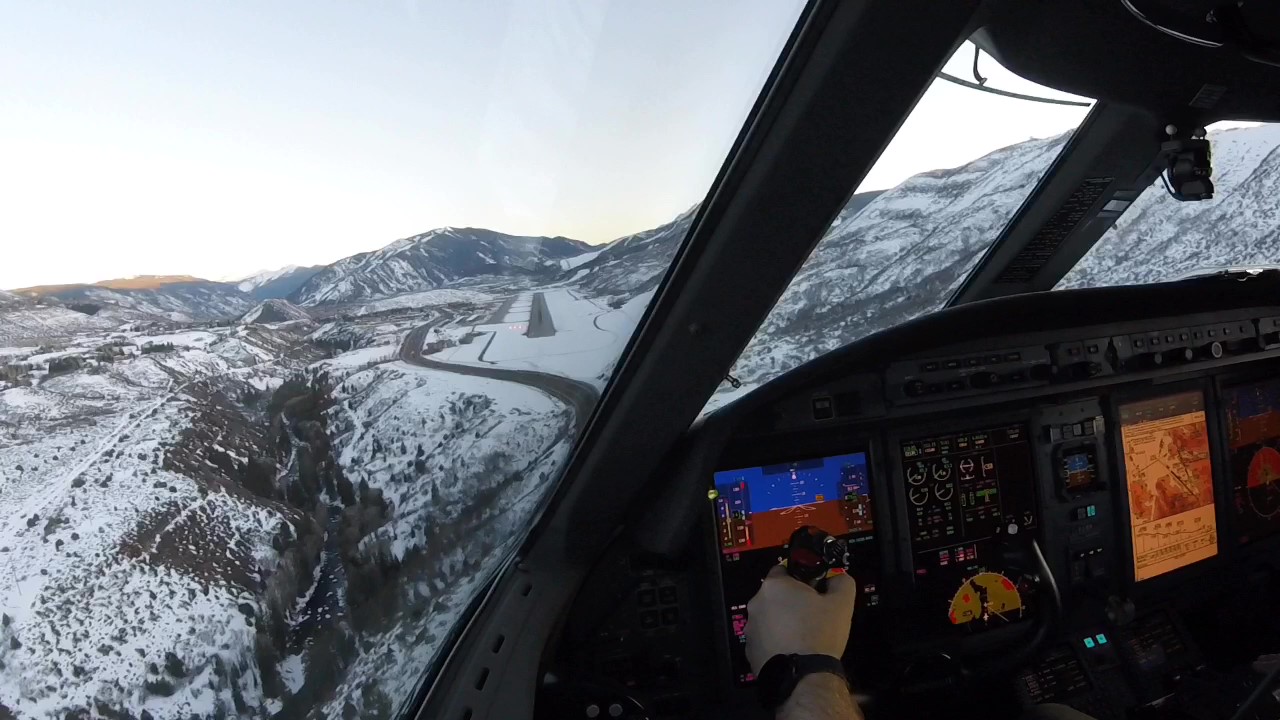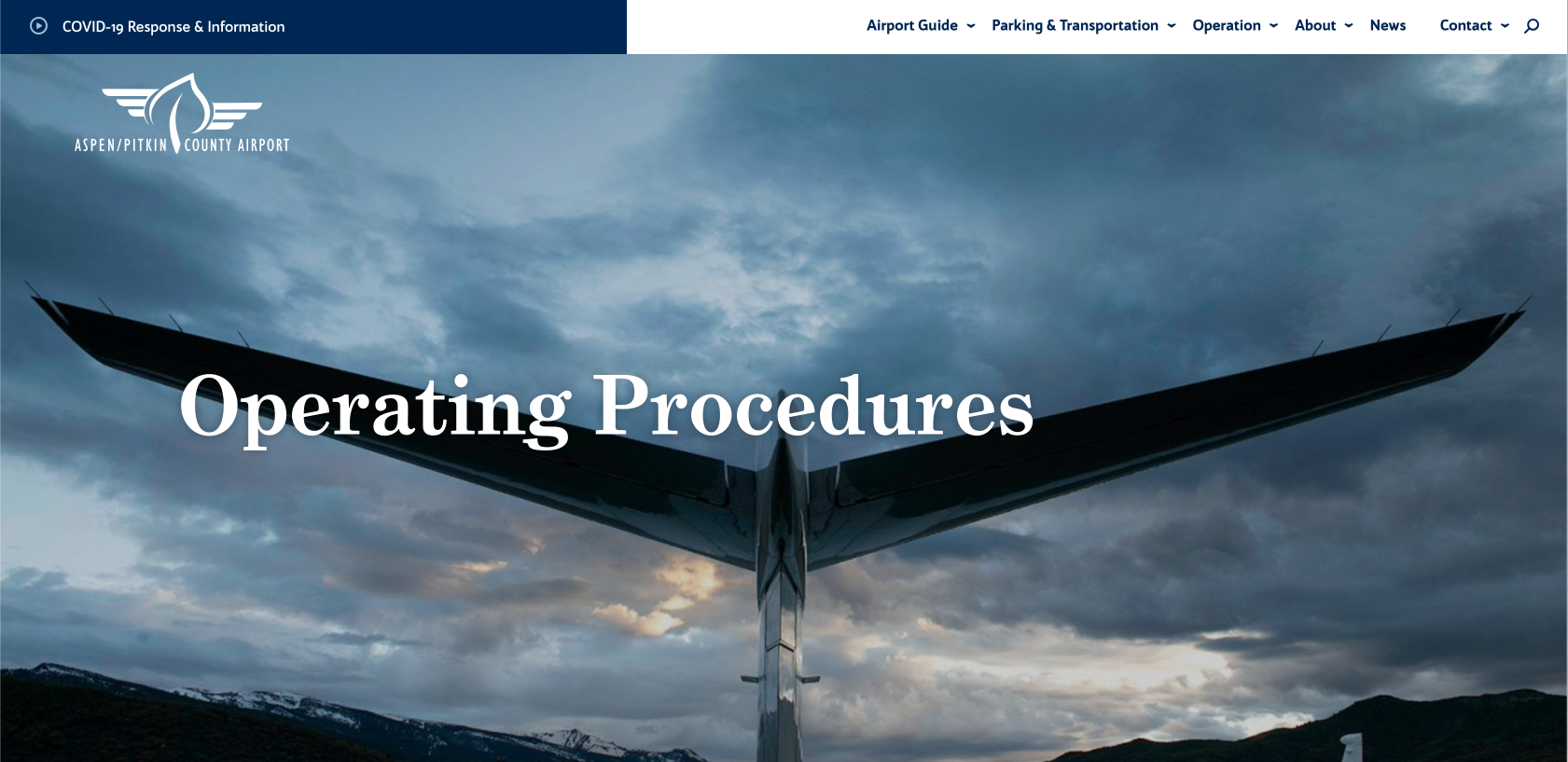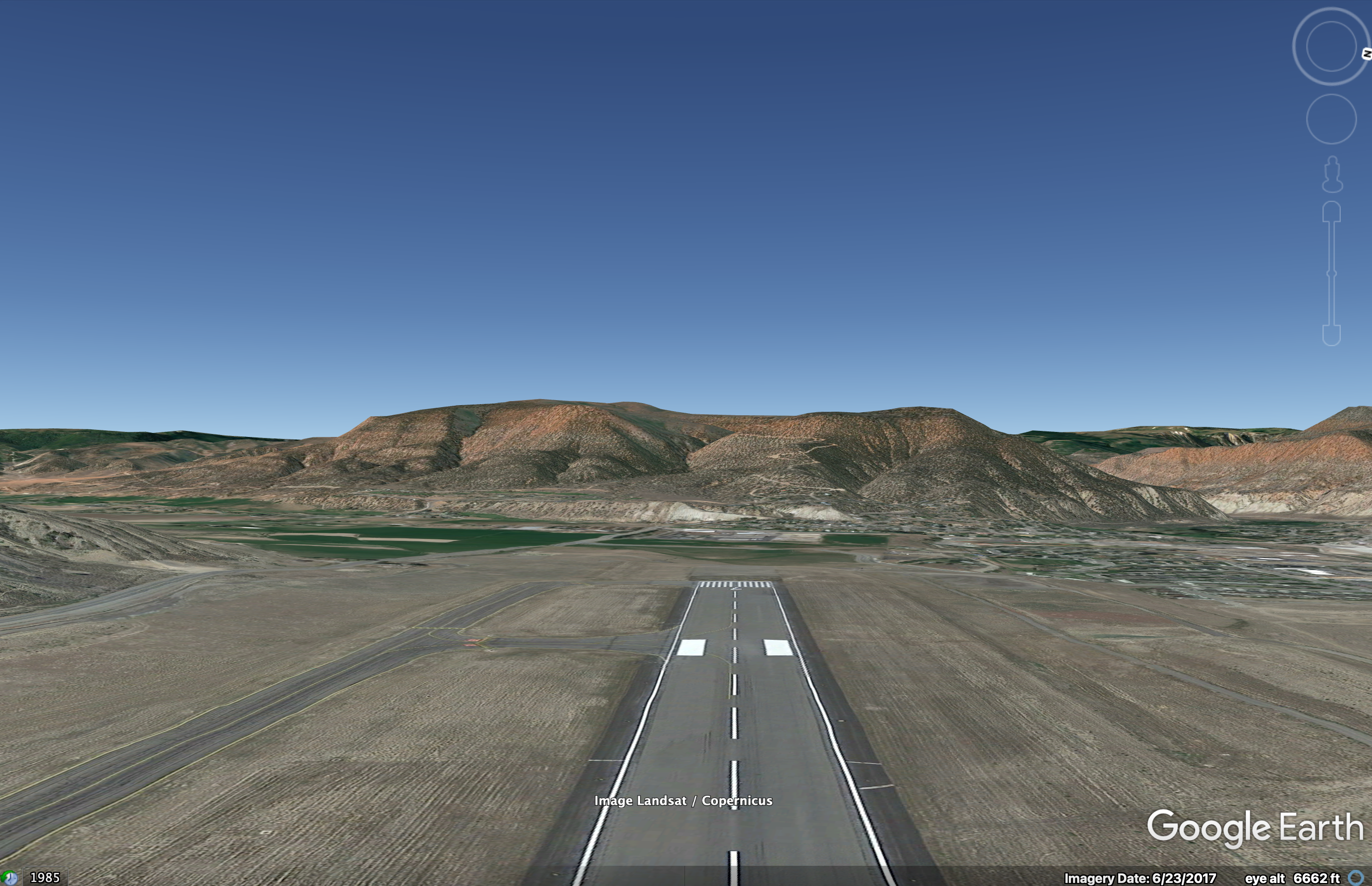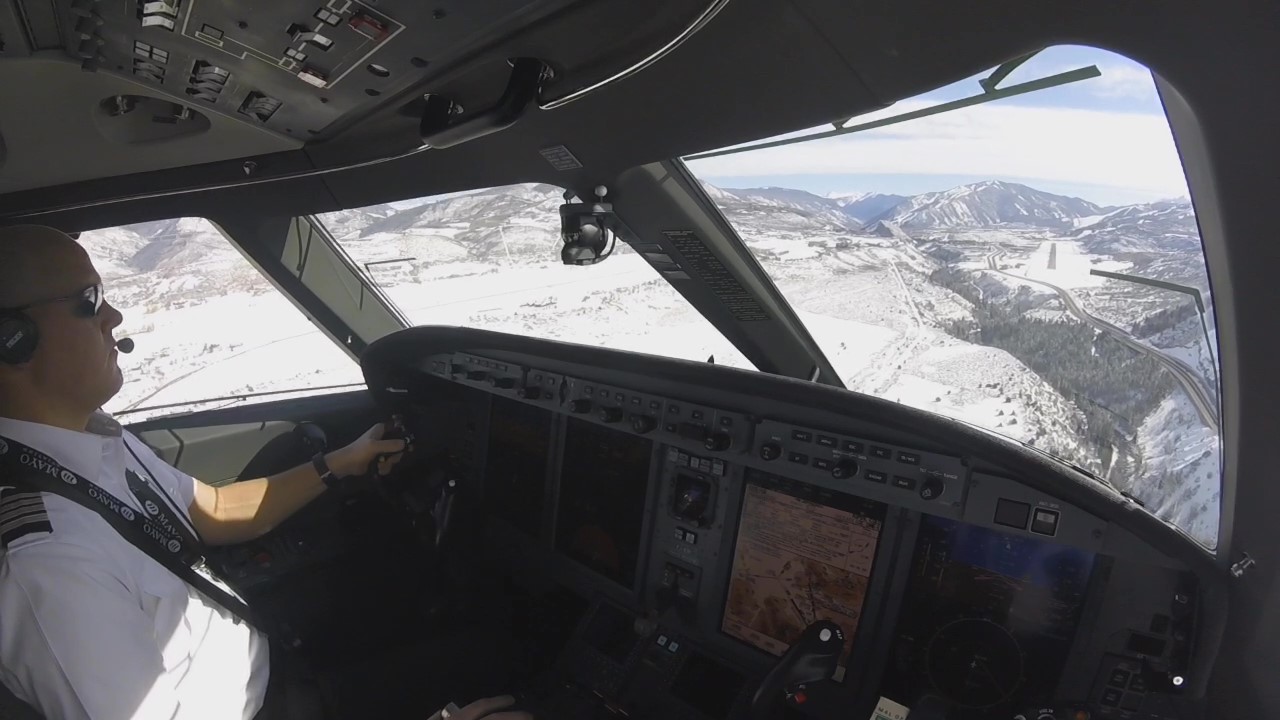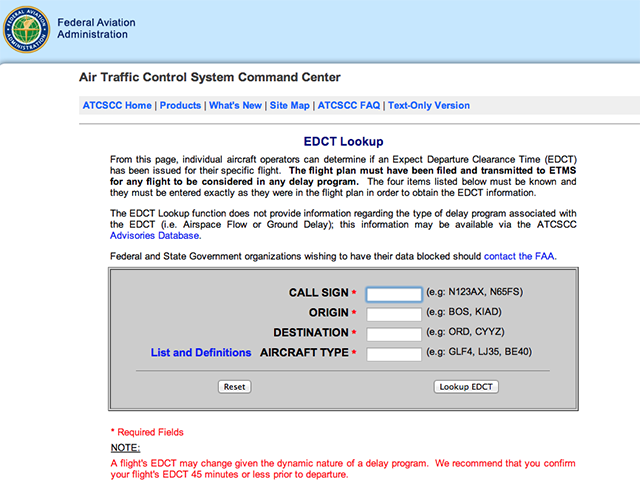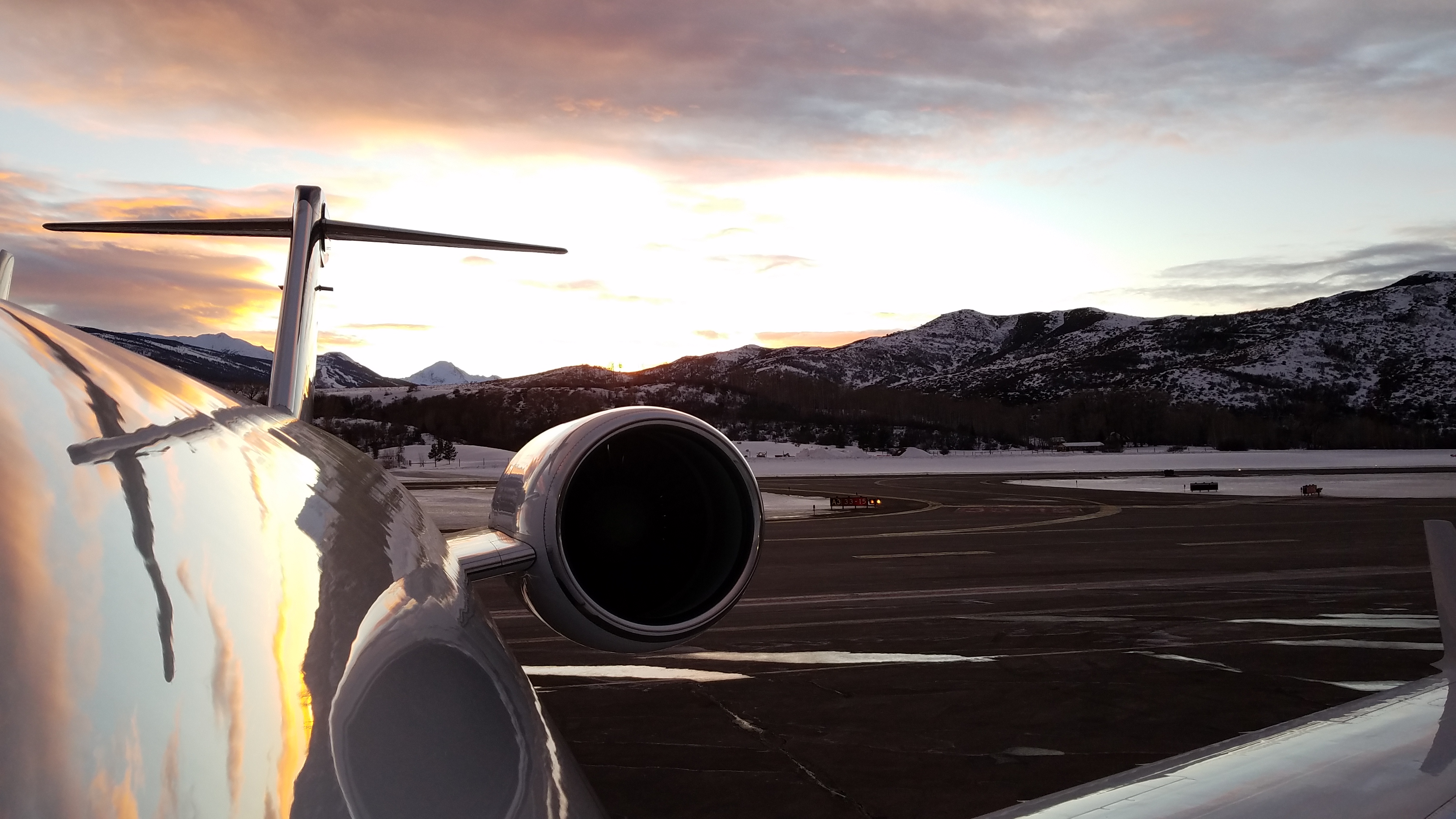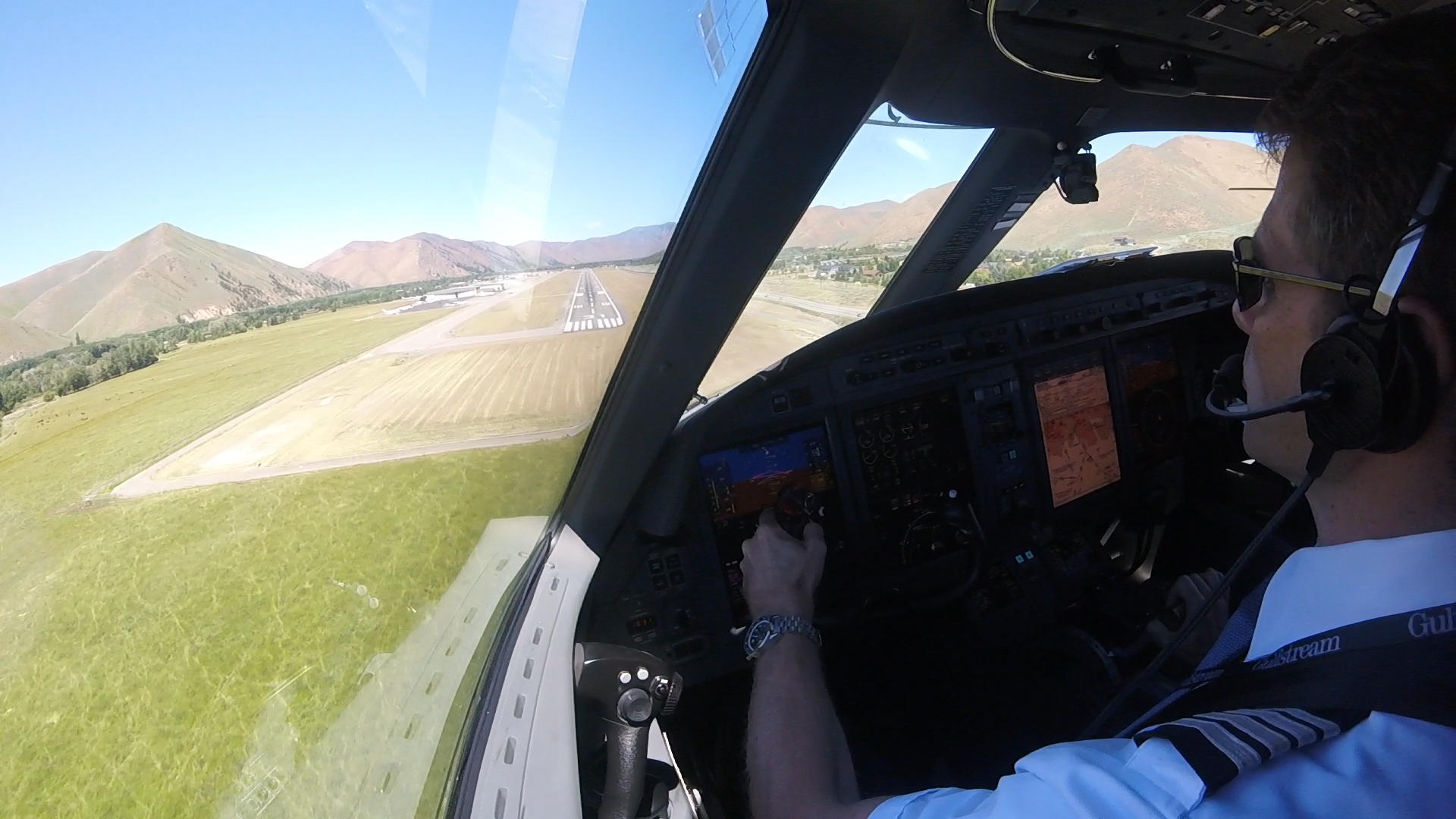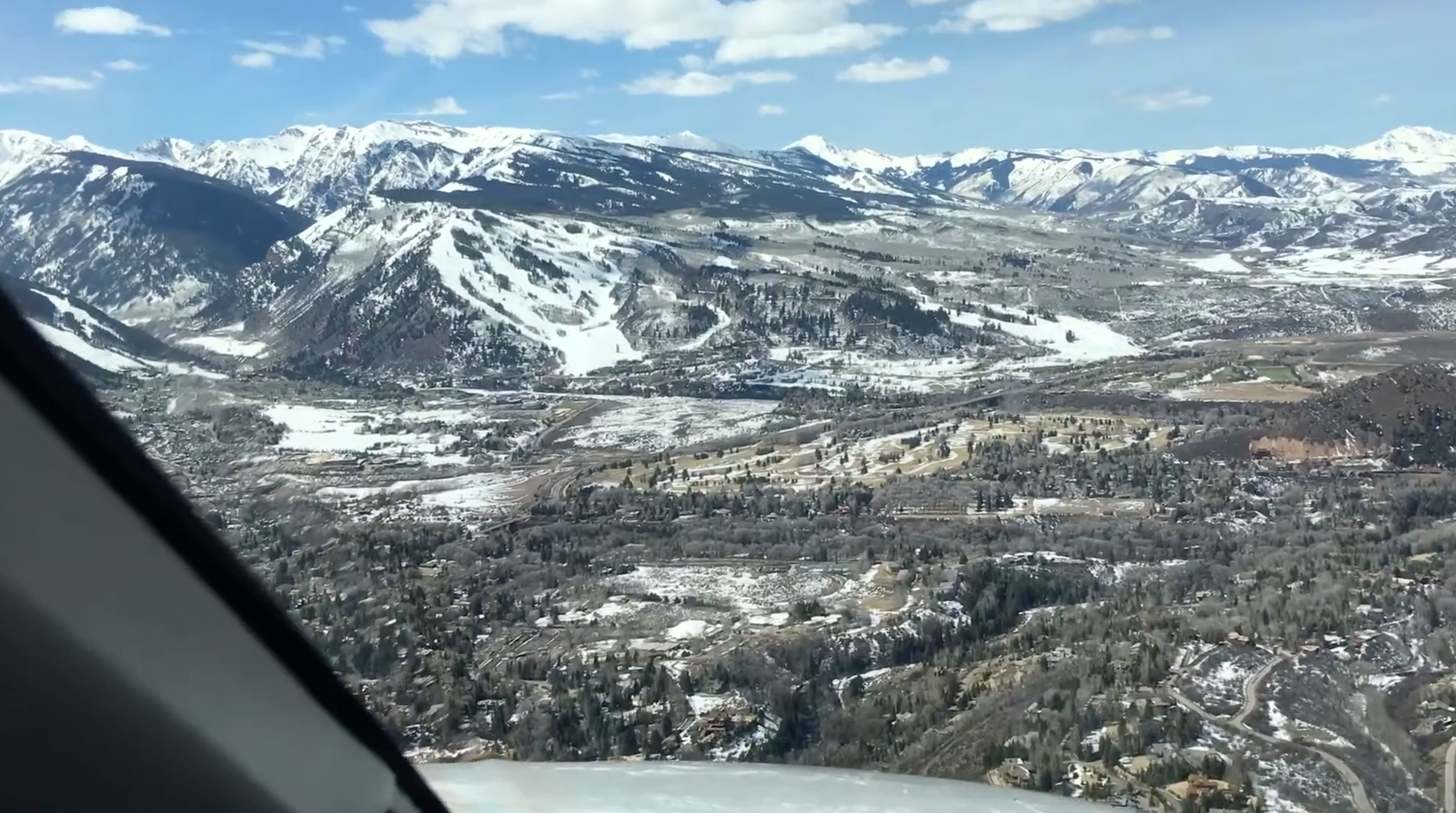If you’ve never flown into Aspen-Pitkin County Airport/Sardy Field (KASE), Colorado; Eagle County Regional Airport (KEGE), Colorado; Friedman Memorial Airport (KSUN), Hailey, Idaho; Jackson Hole Airport (KJAC) Wyoming; Truckee-Tahoe Airport (KTRK), California; or other airports nestled next to a large areas of cumulus granite, you need to talk to someone who has. Looking at an instrument departure, arrival, or approach procedure can give you a false sense of confidence that what is to come is perfectly normal. It most certainly is not.
— James Albright

Updated:
2021-08-15
I remember my first time into Eagle as a new copilot in a new flight department with a seasoned captain who had been there once before. He flew the LDA DME Runway 25 just as depicted, causing the Enhanced Proximity Warning System (EGPWS) to go nuts (with me wanting to go nuts along with it). After the “Terrain, terrain!” warning went quiet, we got a few “Pull up! Pull up!” alerts as he dove for the runway. My first thought was we should go around but staring at the mountains in front of us told me that would be no easier. Somehow, I was unable to predict any of this from the approach chart or his approach briefing. Clearly, I was unprepared. The captain shrugged it off as just the way things are when landing at a mountainous area airport. I picked up the phone and started calling people who knew about this type of flying, something I should have done well before this flight.
Over the years, I became the seasoned mountainous airport veteran and learned the EGPWS doesn’t need to go nuts (with me right behind it) and the descent rates do not need to violate stable approach limits. In short, you can make arrivals and departures from a mountainous airport, well, normal. You just need to know how to prepare.
My second approach into Eagle was much smoother than the first, because I learned that published weather minimums are unrealistic, real weather minimums are much higher. I learned that if you don’t see the runway at the waypoint prior to the terrain about eight miles east of the airport, you shouldn’t be descending. Finally, I Iearned that once you see the airport well east of those mountains, you can descend north of the mountains, keeping the EGPWS happy. And that meant your descent becomes more gradual, keeping stable approach rules happy. I learned these techniques from someone who had flown into and out of Eagle dozens, if not hundreds of times. And that gave rise to a checklist that makes any mountainous airport arrival or departure much easier.

1
Local knowledge
On the face of it, the challenge is a simple one: arrive and depart while avoiding all obstacles and not upsetting anyone in the airplane or on the ground. (A lot of these airports are noise sensitive.) But the actual mechanics of how to do that involves more than just big, powerful engines. It also requires an aircraft that can descend smartly and navigate precisely. You can get a quick overview of what is needed by asking someone who has done it before, preferably in a similar aircraft. You can find local knowledge as close as your own airport, user’s groups, or posted in airport directories and flight planning services.
2
Official intel
Most of these challenging airports have very good website pages with things you will need to know before taking off from “home plate” for ski country. Is there a slot reservation system in place? Are there parking restrictions for certain size aircraft? Which arrivals and departures are expected, and which are on the books for only certain operators? If you are going to Aspen-Pitkin County Airport/Sardy Field, for example, your mission planning should include a visit https://www.aspenairport.com.
Another great source of airport information is Ac-u-kwik, where you will find worldwide airport, FBO, and handler data. That little book you’ve kept in your cockpit all these years is now available online at https://acukwik.com.
Don’t neglect the FAA’s chart supplement, also known as the Airport/Facility Directory, available at https://www.faa.gov. Pay close attention to runway slope, declared distances, hours of operations, and any restrictions that could allow you to land when you want, but not leave when you want.
3
Airport and local support
You should make a call to the Fixed Based Operator, if available, or airport operations office otherwise. Ski season, weather, and airport construction can make procedures from your last visit obsolete for your next. Hangars might be available, but usually require reservations be made well in advance. These airports have been known to run out of fuel, deicing / anti-icing fluid, and other items of support you might have taken for granted. During peak tourist season, hotel rooms, rental cars, and other necessities can become rare commodities.
4
Situational awareness
You can start with an old-fashioned sectional chart or terrain chart, if available, to get a good idea about what the real obstacle threats are. But you should go one step further and test fly the procedures with a good earth mapping application. You can, for example, get a good view of the airport and flight paths using the 3-Dimensional tools available with ForeFlight and on GoogleEarth. (https://www.google.com/earth/)
Look also for ground references, such as rivers and highways. Many professional pilots become so fully immersed in an Instrument Flight Rules (IFR) world that the terrain recognition of their Visual Flight Rules (VFR) days have atrophied. Approaches to many mountainous airports are better negotiated with a mixture of IFR and VFR skills. In fact, the circling approach is the arrival of choice for many of these airports.
5
The circle question
Many mountainous area airports have circling approaches, but these aren’t meant as circling approaches in the conventional sense. These approaches do not meet criteria authorizing straight-in landing minimums, so the only minimums published are “circling” minimums. They cannot be published as straight-in approaches because the required descent rate or the angle between final approach and the extended runway centerline is too great. But that bit of common sense doesn’t stop you from circling if there aren’t any specific prohibitions. But if you plan on circling in close proximity to any obstacles, you should consider trying it in a good simulator first.
Years ago, as a check airman for a large management company, I was asked to sign off allowing company pilots to circle to Runway 07 using a right base at Eagle Airport. I said no, but a number of other check airmen said yes. So, we put our company’s chief pilot, director of operations, and principal operations inspector in a Category D aircraft simulator to give it a try. None of them were able to land the first time and none of the attempts were stable. We decided to prohibit the maneuver. But to this day I hear pilots do indeed execute a right circling approach to Runway 07 and some airlines have charted visuals that end in a right base to Runway 07. So, if you are keeping score, I think it is a nutty idea and a couple of airlines disagree.
I recommend you do not circle to any runway in mountainous terrain that is not the usual landing runway, unless you’ve tried it in the simulator several times. Your vote may be different, but if the winds favor circling to the opposite runway at many of these mountainous area airports, I would look for another place to land.
6
Slots and delays
Many of these airports have a Seasonal Traffic Management Plan (STMP) reservation programs, or "slots," and can be subject to sudden and enduring delays. Things can be constrained early through a Collaborative Trajectory Options Program (CTOP) or an Airspace Flow Program (AFP). You could see trouble in the last minute by a Ground Delay Program (GDP). Or the airport on its own can decide they are too busy. Knowing the source of an Expect Departure Clearance Time (EDCT) can help you minimize delays. Here are a few hints from the NBAA:
- File a flight plan well in advance of the trip. Flights that are “known demand” or already on file when a program is implemented will likely see less delay. Any flight filed after the program has already been implemented will be “pop up” demand and will automatically receive the average delay for that time (measured in 15-minute groups) and likely additional delay as it will look for the first available time in the program after the initial average delay is assigned.
- File an accurate departure time. If an operator misses their EDCT, they will likely be assigned additional delay.
- Cancel a flight plan if an alternate destination is decided upon. Anyone not canceling a flight plan will still be considered “known” demand. That will result in a “hole” being made that could have been used by another general aviation operator for that given airport.
- Have a “back-up” plan using an alternate airport just in case delays are excessive or ground stops are implemented. (please note the ground stops can go into effect at any time if the ramp reaches capacity).
MITRE has a "departure readiness information exchange" that can expedite your departure from many of these airports. More about this program: https://sites.mitre.org/mobileaviationresearch/.
7
Aircraft performance
Each of the previous steps is designed not only to better prepare you to fly to the airport in question, but also to talk you out of it if the risks are too high in your view. If you’ve made it to this point, you must consider the cold, hard facts of aircraft performance.
The obvious problem is vertical: can you out-climb the mountains? Looking at the required climb gradient on a Standard Instrument Departure (SID) can be misleading. The SID is based on All Engines Operating (AEO) but most aircraft performance data is based on One Engine Inoperative (OEI). If you subscribe to a runway analysis service, you might have a way of beating the obstacles OEI while still meeting all SID requirements AEO. That is the best of both worlds, but only if you fully understand where all the numbers come from.
The wrong answer is the often-canned answer, “I’ll see and avoid.” First off, even if the weather is at legal VFR minimums, you are flying a lot faster than what those minimums were designed to account for and just because you have sufficient visibility on the runway, the same may not be true once you are between two mountains. Secondly, even if you can see the mountain, your aircraft might not be able to out-climb it.
The vertical problem is made more difficult with the horizontal problem. In order to fly between the obstacles, you need to navigate between them accurately. For a complete explanation of the vertical and horizontal problem, see: Departure Obstacle Analysis.
Don’t forget to review your cold weather procedures, even in the summer. At higher elevations the need to de-ice can occur year-round.
8
Plan B
You should never depart for a mountainous area airport, even with the best of weather, without a Plan B, C, D, and so on. Eagle Airport, near Vail, Colorado, is host to airline service on a single runway. I’ve had to hold and divert for various airliner maladies, such an airplane with a blown tire that could not vacate the runway in less than an hour. I’ve seen Aspen go below minimums on a day forecast to be “severe clear.” You should have a list of viable alternate airports, near and far. For Aspen and Eagle I usually keep nearby Rifle Garfield County (KRIL), Colorado on the top of my list, but I always include enough fuel for Centennial Airport (KAPA) near Denver.
Even after you show up at the final approach fix there is more to consider. The fact you will have to out-climb the mountains on departure should be obvious. What if you have to go around just prior to landing, the so-called “balked landing.” The missed approach on your instrument approach procedure is based on starting the climb at the missed approach point and height. If an aircraft, a ground vehicle, or even an itinerant moose blunders onto the runway just as you are about to land, will you be able to go around and beat those mountains? There are aircraft performance analysis companies who will figure your maximum possible gross weight to overcome a balked landing and provide escape maneuvers to do so. (You should practice these engine-out in the simulator before relying on them.) At the very least, you need to consider departure procedures even when you are on arrival. When all that happens, you will find yourself with the more conventional missed approach questions: where I am going now and do I have the fuel to get there?
Having to hold for extended periods is not uncommon, especially at airports which are one-way it, one-way out because of the obstacles. You cannot land until departing aircraft are well clear of the arrival path.
There is a push-pull when it comes to loading extra fuel to extend your list of options. Your performance might be critical at the higher elevations of these airports, but you really need to have an alternate or two, no matter the weather. Finally keep in mind another option you have: flying to a nearby, less challenging airport.
9
Putting it all together
The first time you fly to one of these mountainous area airports you will need to prepare if you hope to keep your cockpit workload manageable. You will be well advised to seek out local knowledge, research available intel, and understand the aircraft performance versus terrain challenge. You may find out that you cannot operate at an airport while other aircraft or operators can. It could be a matter of climb performance, navigation accuracy, or something else. There may be available approaches that do not appear in your subscription because they require special authorization.
Once you’ve become accustomed to the airport it would be tempting to consider yourself “signed off” and not worry about it at all until the next time ski season hits. If you are a frequent visitor to any of these airports, you could probably benefit from a written pilot’s guide to record everything you’ve learned and provide a foundation for future trips. Flying into a mountainous area airport can tremendously rewarding if you plan properly and understand the risks.

